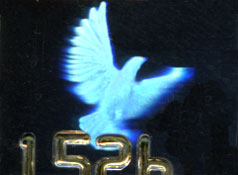David Stairs
Sociobiology in the 70s wrestled manfully with the challenge of the genetic basis of human behavior. Robert Trivers1, following W.D. Hamilton’s theory of kin selection2, asked whether reciprocal altruism might not be selected for. In otherwords, scientists were wondering whether there could be a gene for altruism.
In the mid 70s, in his now iconic book The Selfish Gene,3 Richard Dawkins went a step further. He proposed that there might be a unit of culture that was a cultural replicator in the way genes are biological ones. Dawkins called his unit of cultural measurement a meme, from the rootword “mimetic,” and described a meme as “a unit of information residing in a brain.” This is a fairly broad definition, one that would apply equally well to ideas, stories, behaviors, styles, greetings, beliefs, arguments, even that tune you just can’t get out of your head, anything so long as it is replicable.

The efforts by Dawkins, Trivers, Hamilton and other careful observers of nature and culture to define a non-genetic unit of transmitted information that is “faithful, fecund, and longlived” has not gone unnoticed.
In her 1998 book The Meme Machine4 Susan Blackmore suggests the possibility of there being a meme for altruism. Blackmore argues convincingly for a “memetic theory of altruism”— that when people are generous, whether selflessly or otherwise, they seem more attractive, become popular and, in so doing, spread altruism memes. We know humans are imitators. Think of the baby who mirrors a smile, or the gaggle of twelve-year-old girls who need to dress alike. Think of the comedian whose jokes you incessantly retell. There are also many altruistic human vocations, like nursing or teaching, and many many altruistic institutions, such as lending libraries, soup kitchens, emergency rescue and relief response, blood banks, and myriad philanthropies.
Isn’t it possible that altruism memes are selected to spread because they are imitable and therefore fashionable? How, for instance, should one treat the use of corporate logotypes on clothing in terms of pressure to imitate? Von Dutch may have been a recalcitrant drunk, but that didn’t stop Brittney Spears, who didn’t know or care, from wearing one of his logo caps. Branding, of course, is a topic near and dear to practitioners of corporate design, and fits squarely into the debate about the importance of memetics. But in the design profession discussions about memes and altruism seldom mix. In fact, despite recent appearances to the contrary, an altruism meme hasn’t penetrated the design profession very deeply at all.
Although I have had occasion to argue for the growing influence of a new paradigm of design practice, I have often wondered whether my enthusiasm is just terminally optimistic foolishness. Architecture for Humanity may be using donations to help people rebuild sustainably from Biloxi to Bande Aceh, but, at the end of the day, the majority of AfH well-wishers must turn their attentions to wage earning by some means, or so those of us reared under capitalist skies are socialized to believe. The Design Altruism Project is an attempt to create an interactive online community for the sole purpose of discussing the altruism memeplexe (Blackmore’s coinage) from the perspective of design. We will try to present a melange of ideas, stories, and opinions ranging from the neophyte to the experienced. Regular staff posts will be supplemented by provocative essays by notable non-designers, such as the excerpt from David Korten’s forthcoming book posted below. Whether altruism is your passion or you are just a passing design samaritain, we hope you’ll consider joining in. Thus will the world be changed, one meme at a time.
1 Trivers, Robert. “The evolution of reciprocal altruism.” The Quarterly Review of Biology. 1971
2 Hamilton, W.D. “The genetical evolution of social behavior.” Journal of Theoretical Biology. 1964
3 Dawkins, Richard. The Selfish Gene. Oxford: London. 1976
4 Blackmore, Susan. The Meme Machine. Oxford: London. 1999
David Stairs is founding editor of Design-Altruism-Project.











March 23, 2006 at 5:41 pm
David,
The ‘Design Altruism Project’ is a thrilling idea and gives a lot of hope for aspiring artists and those who are unable to figure out what to do with their creations. I was particularly triggered by the similarrity of terms in the world languages when I read the word “meme”. In Luganda (Language spoken by the Baganda), for instance, meme refers to “heart”, whether well meaning or malicious. It goes beyond to mean the inner feeling of a human being that forms the spirit, something that is not easy to explain. Thus, if a person is not settled or satisfied with what has been said, done, or evidence given, she could say,”Ememe yange simativu”. For believers, they say, “Meme yange wesige Mukama”, meaning “My spirit trust the Lord”. It could also refer to someones willingness to offer anything without expecting a reward. I look forward to seeing more articles that will continue to define Design Altruism.
Let me hope that other Designers too, will give the project the support it deserves.